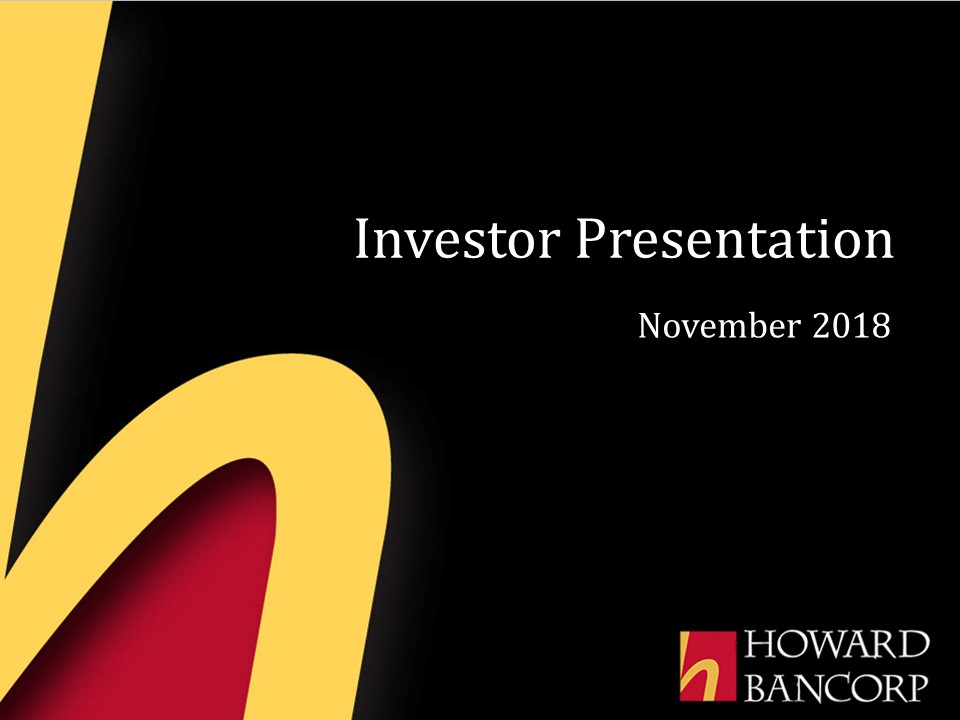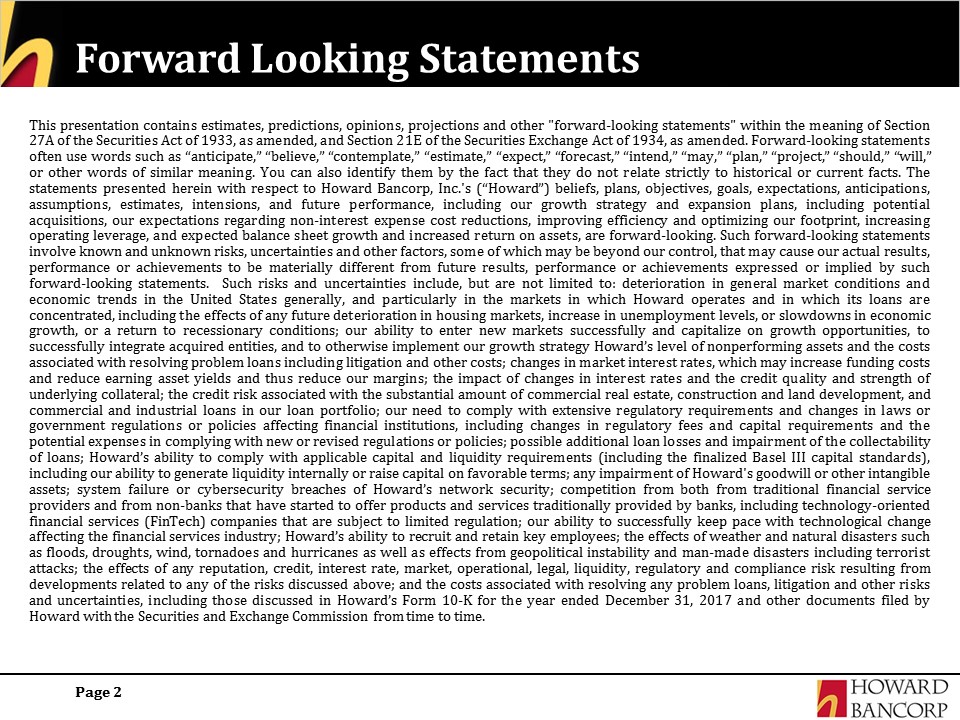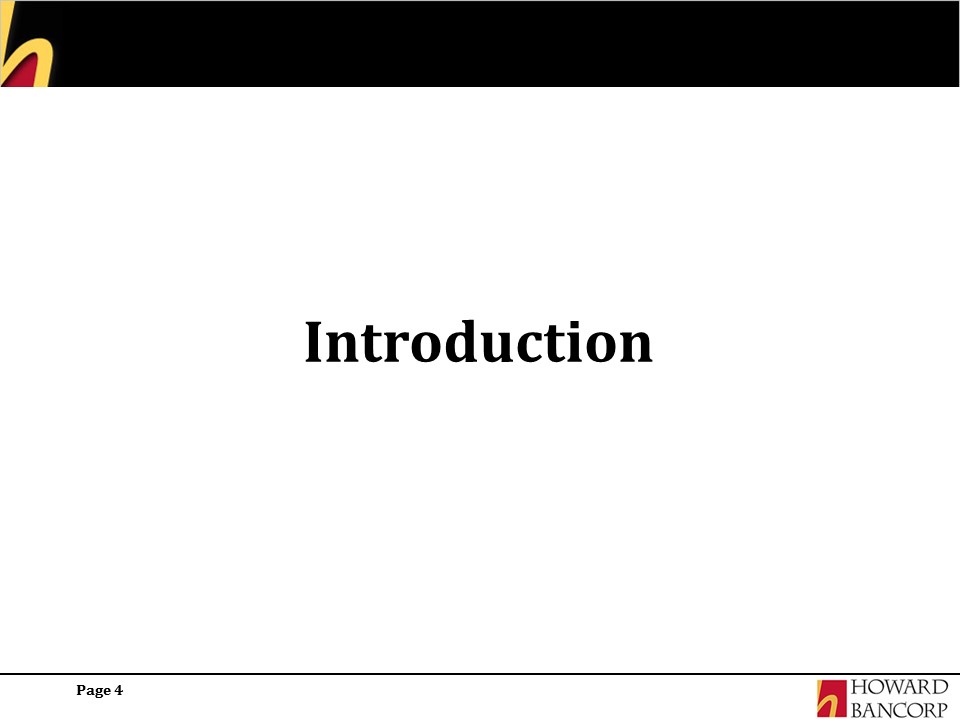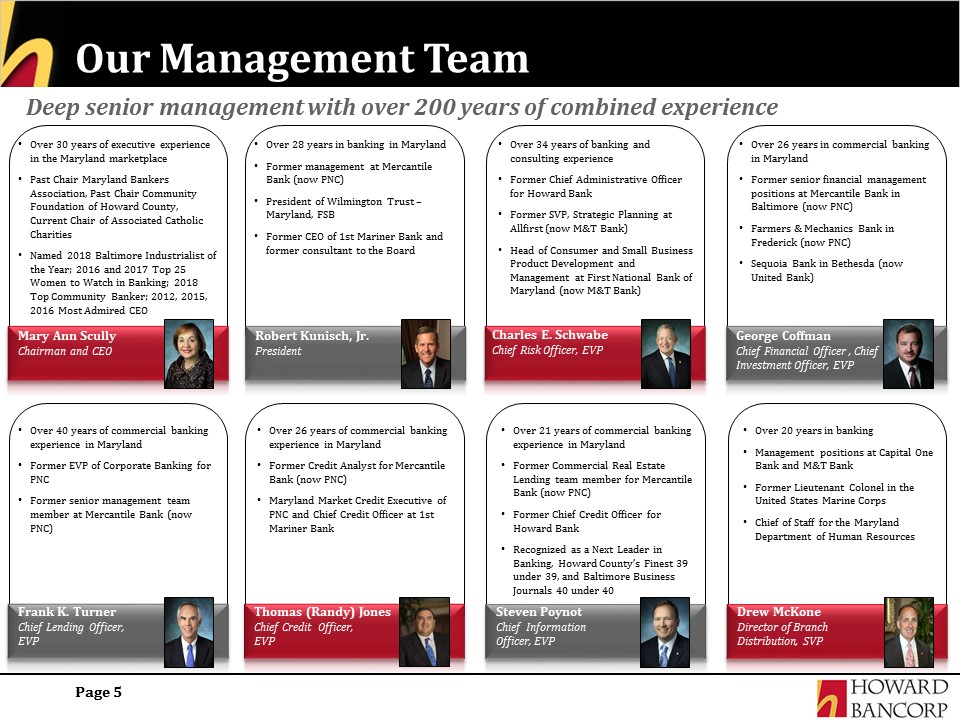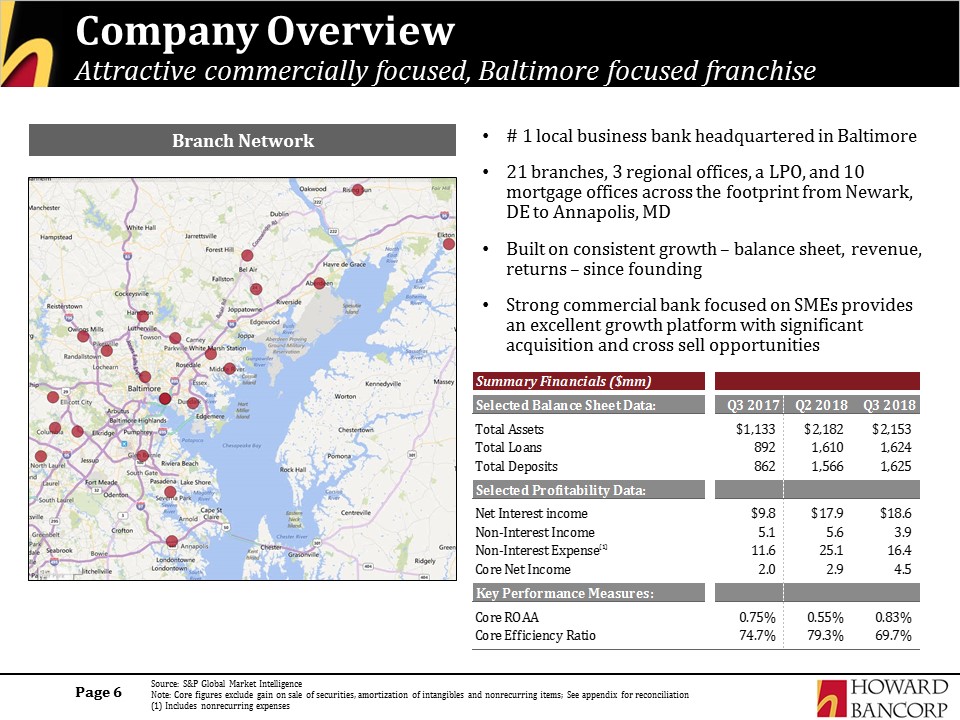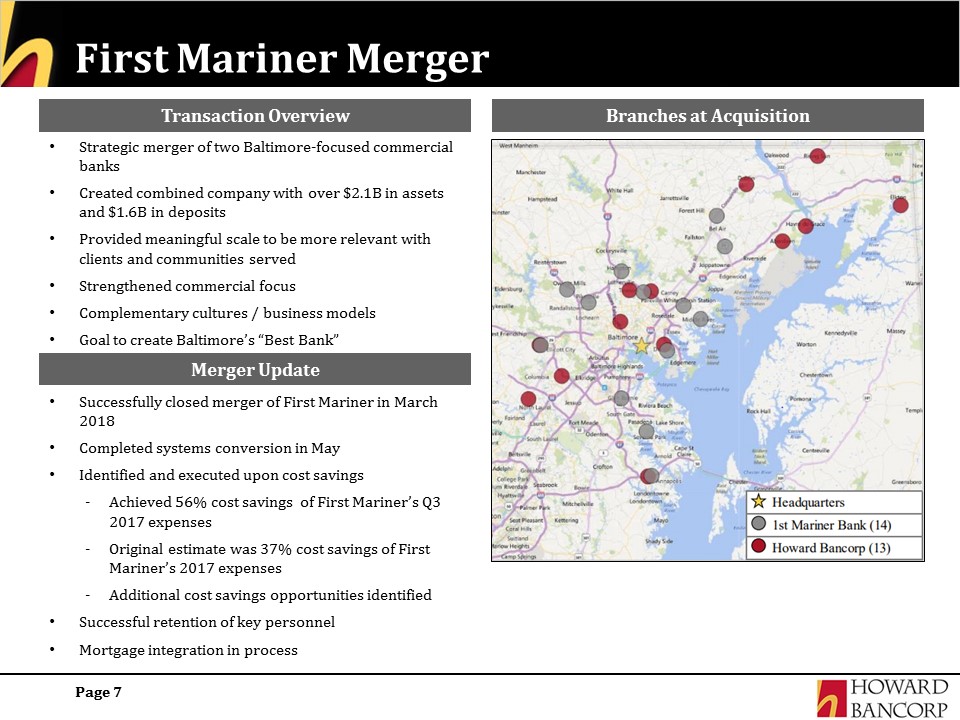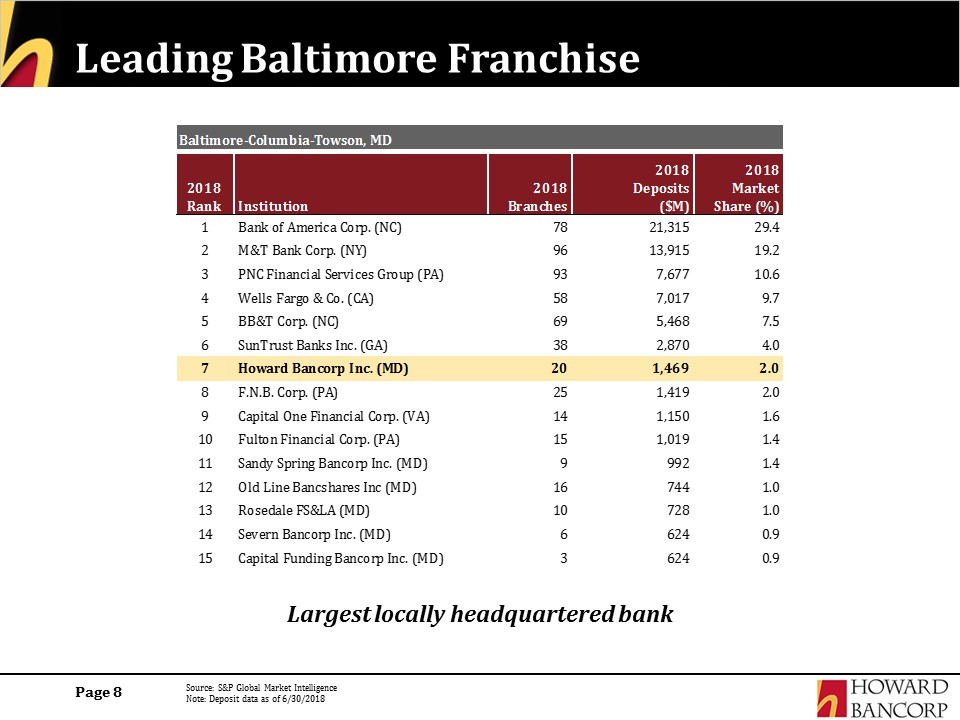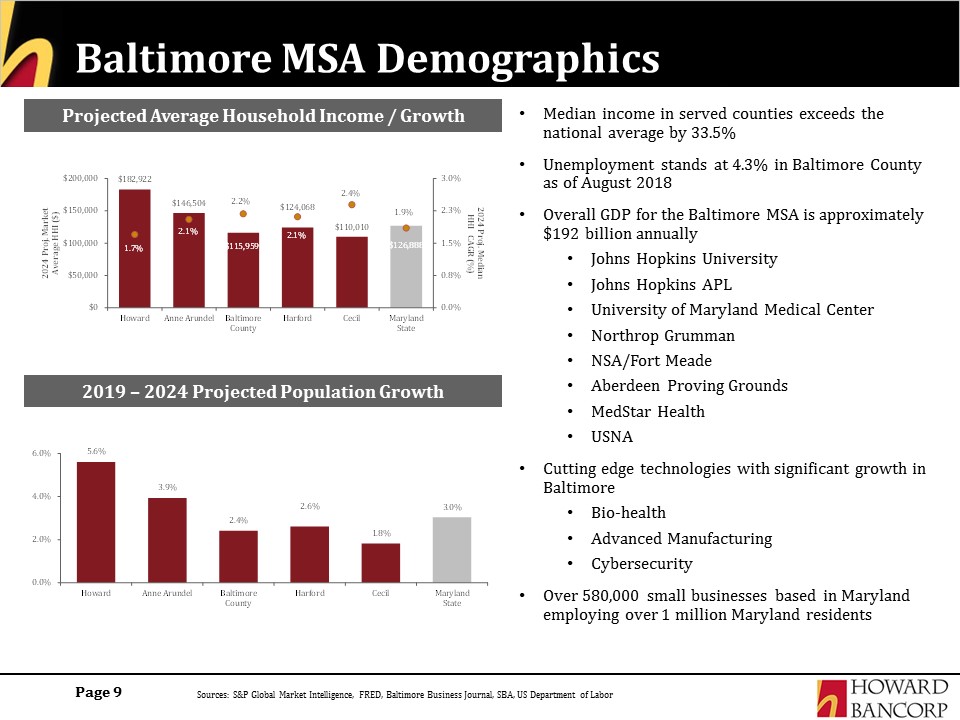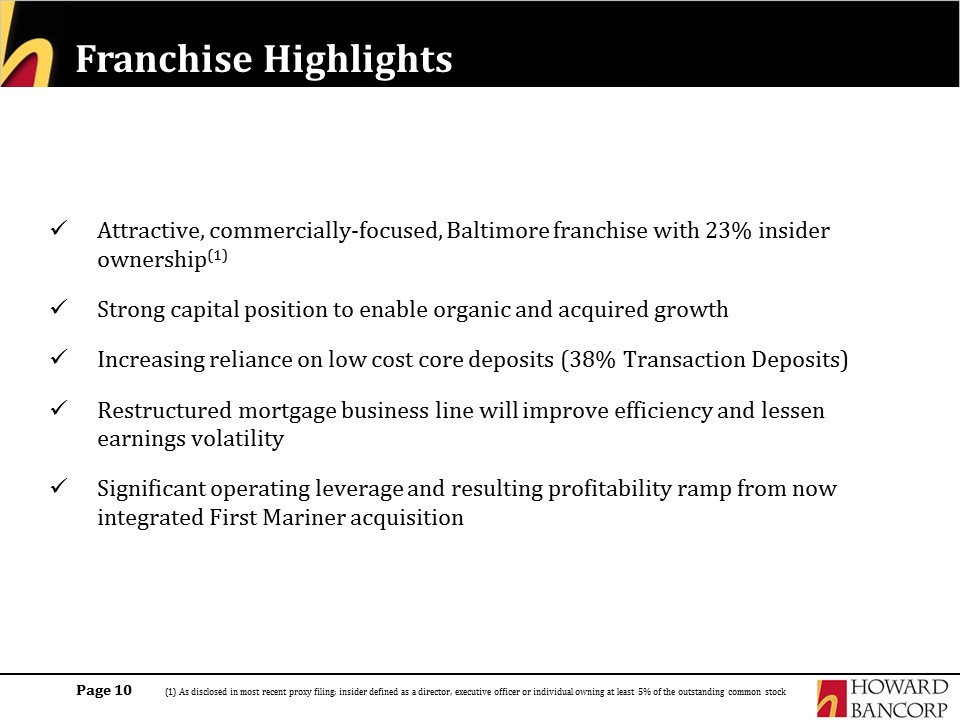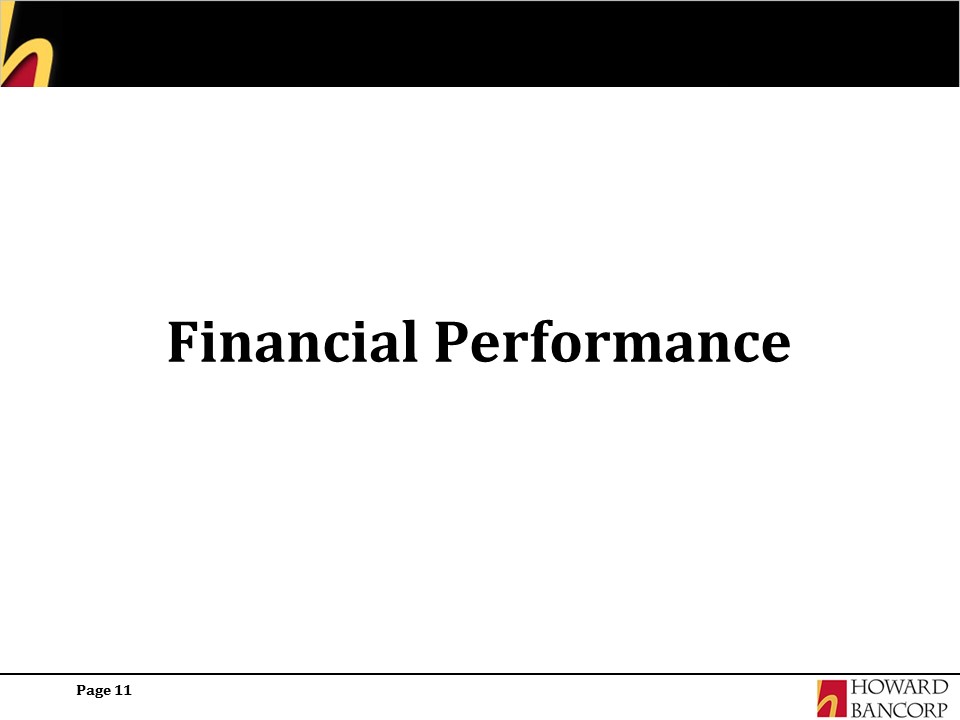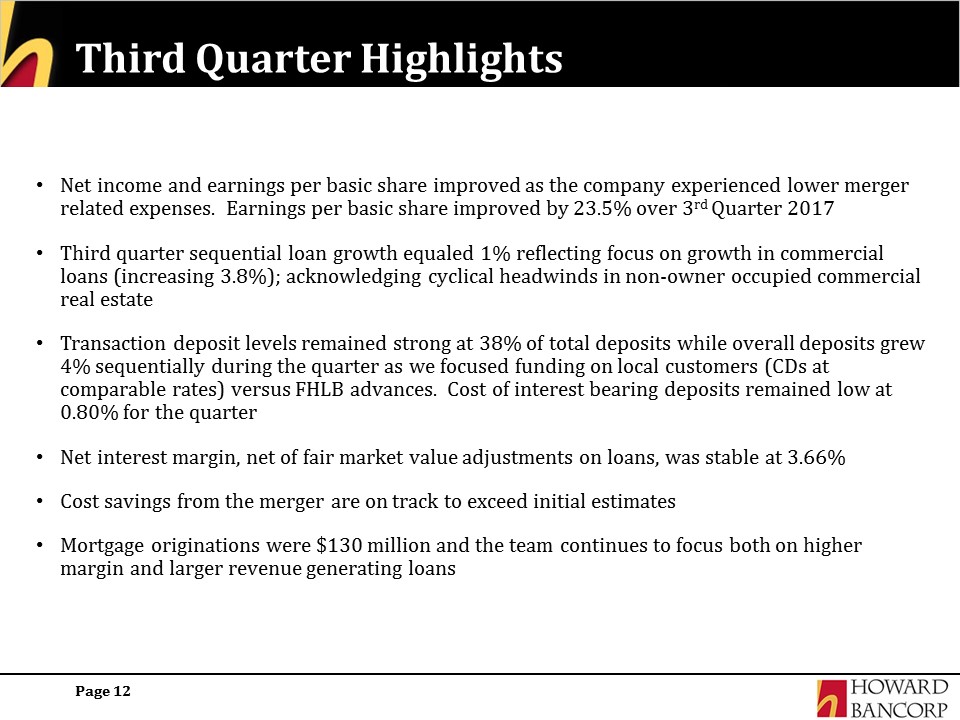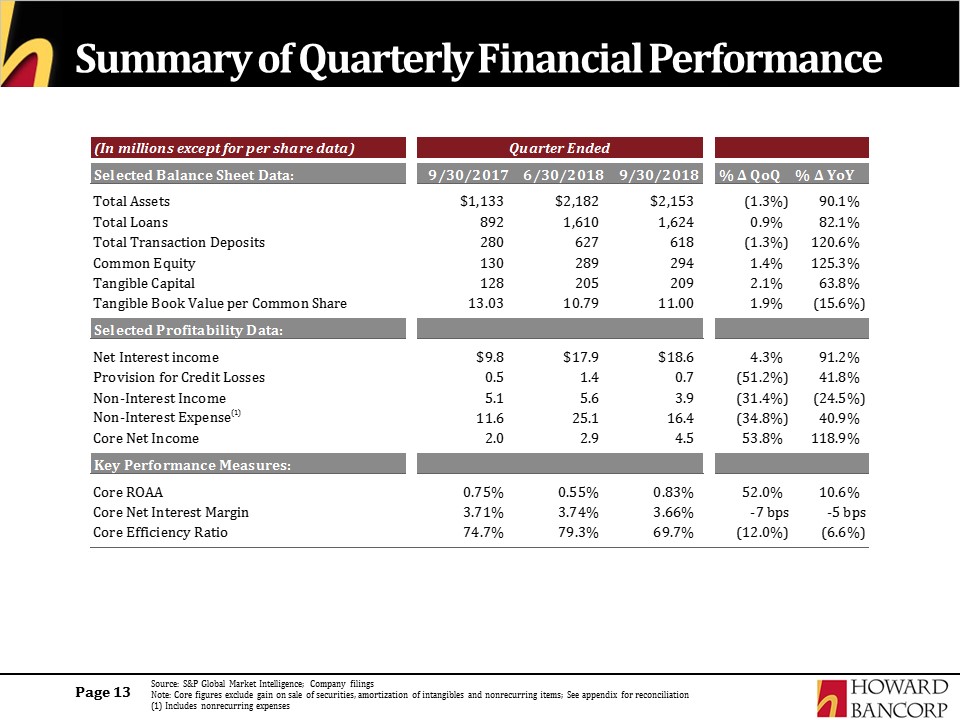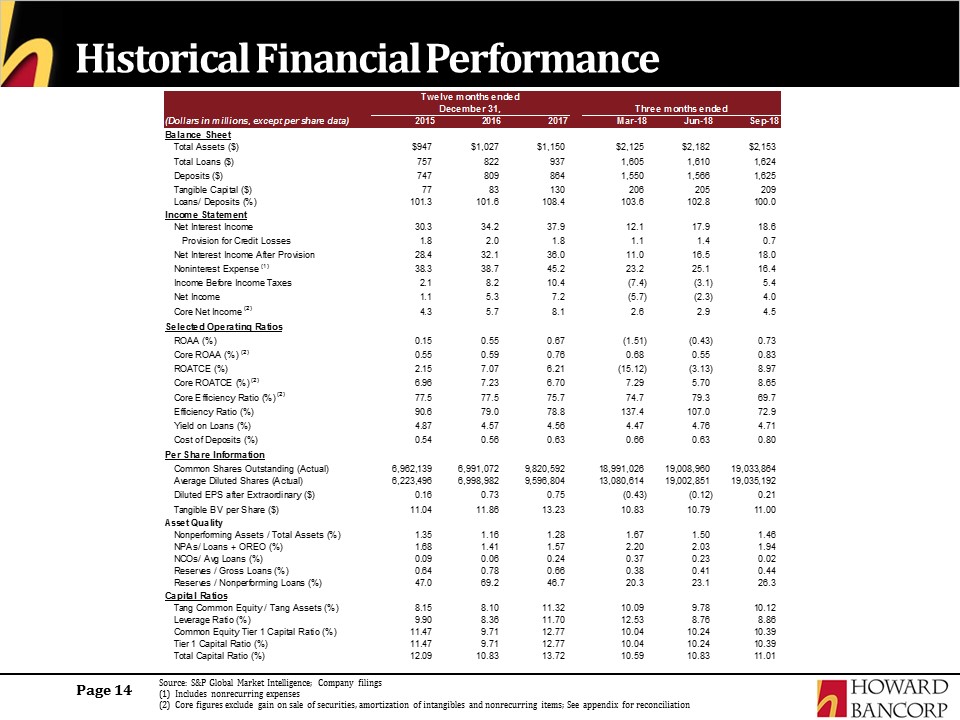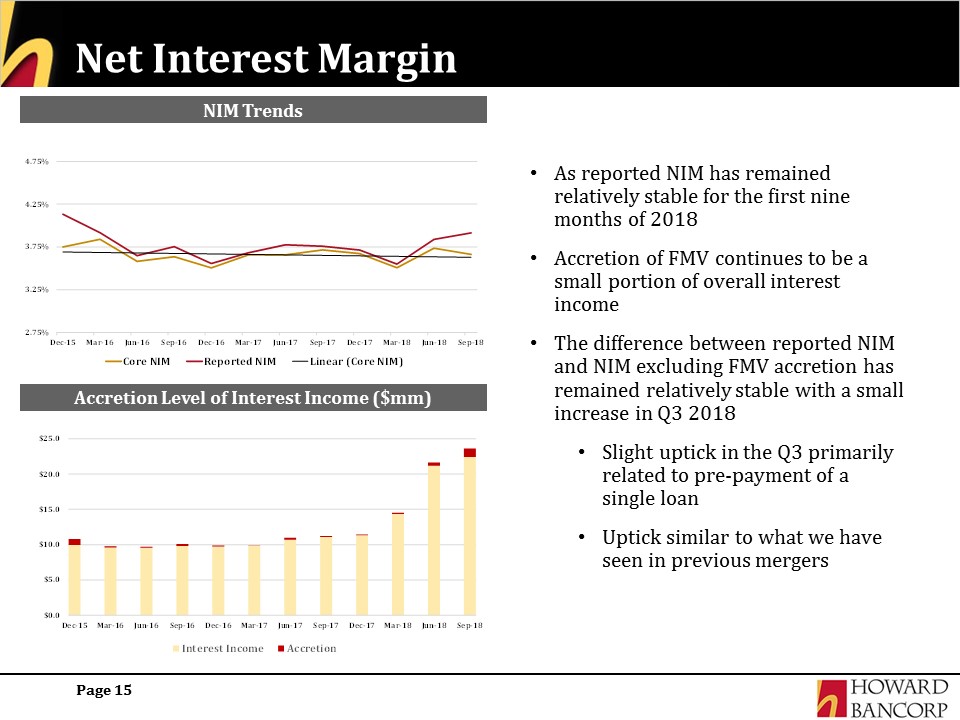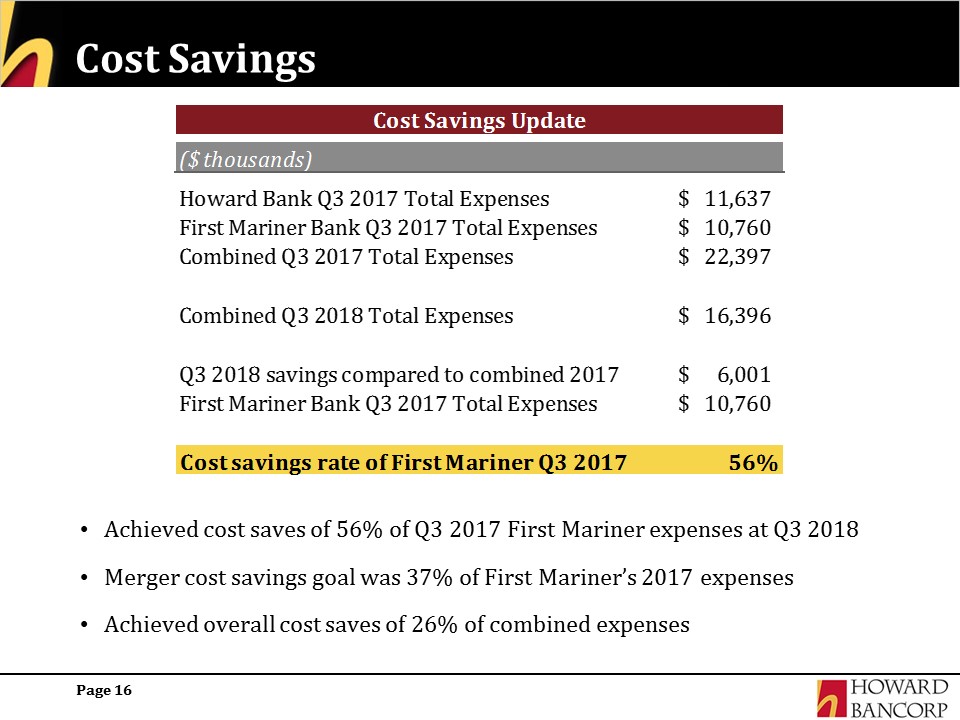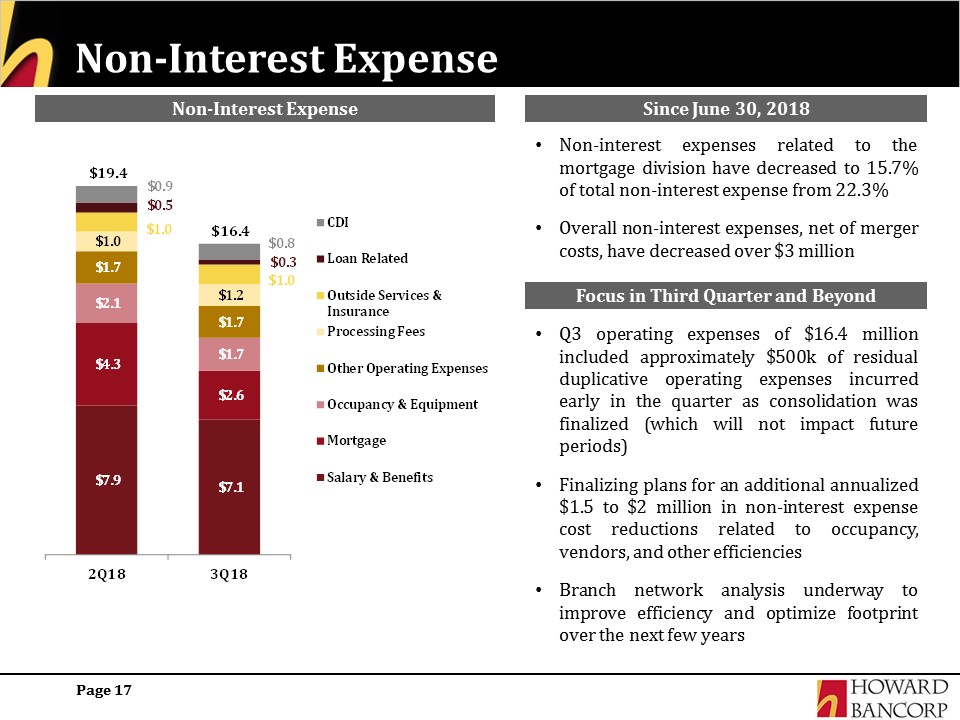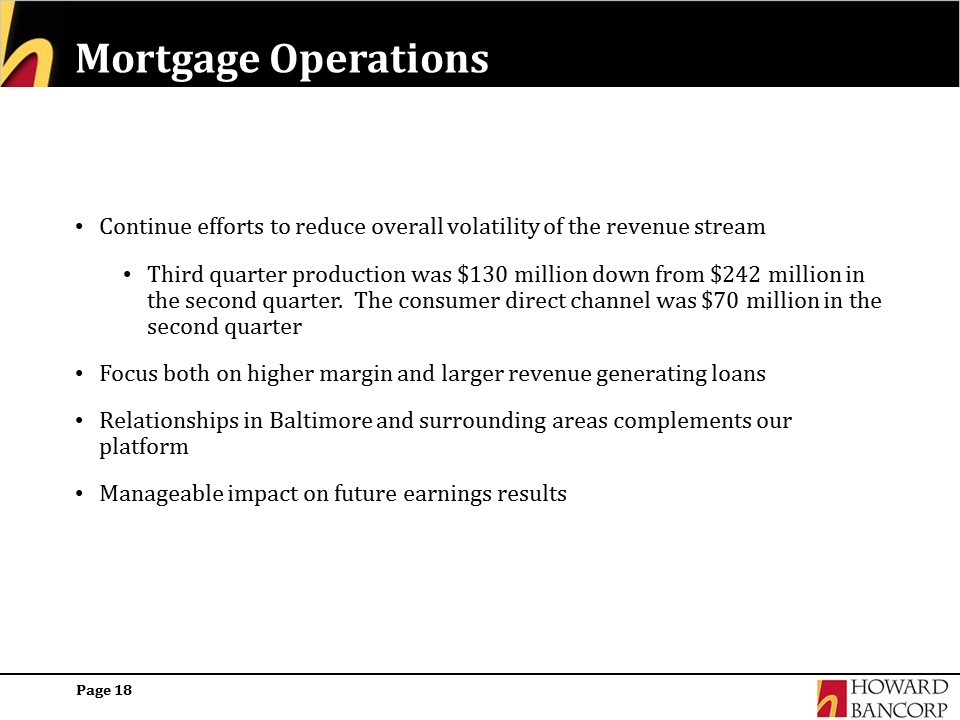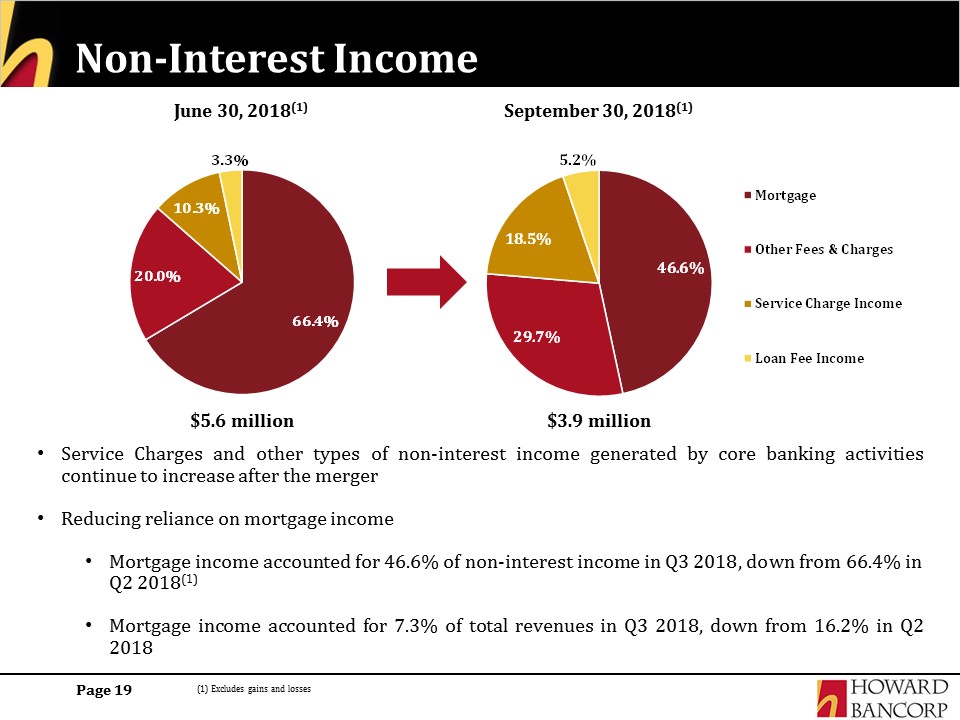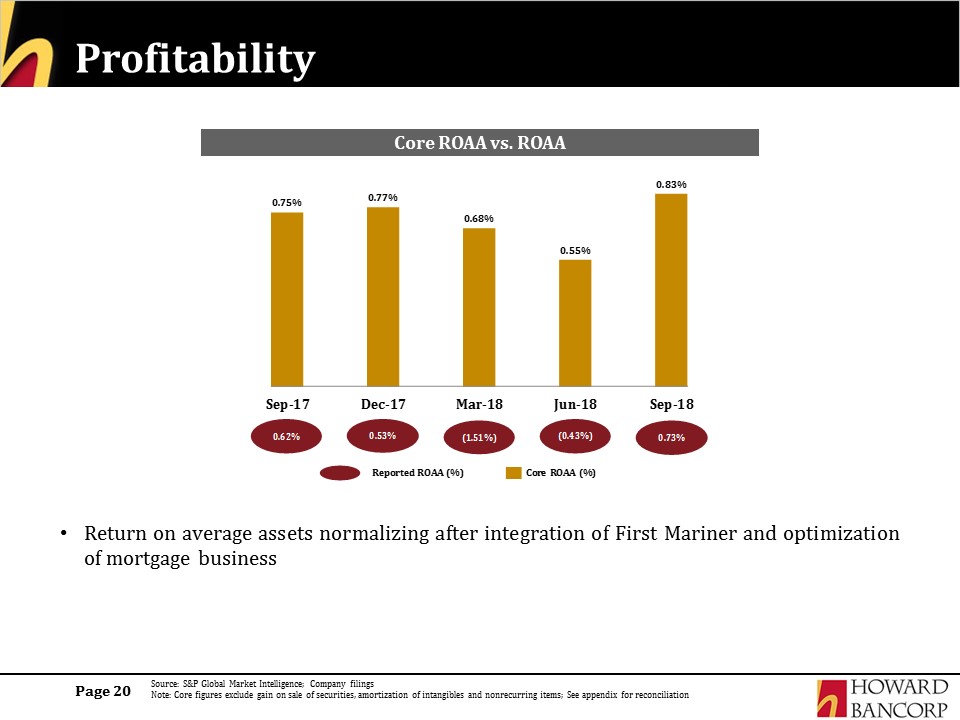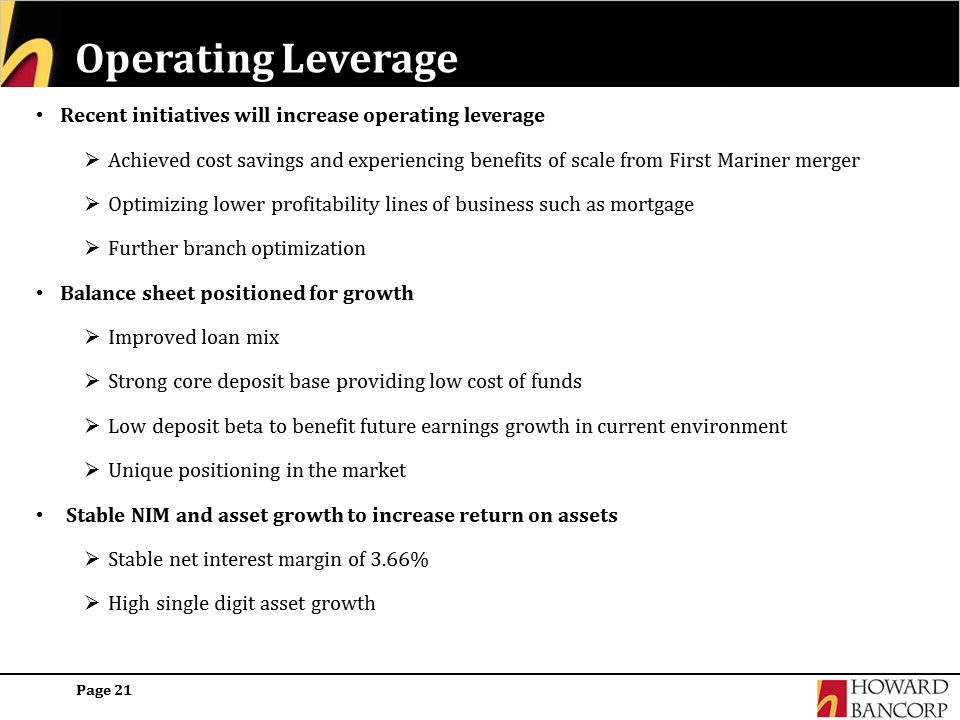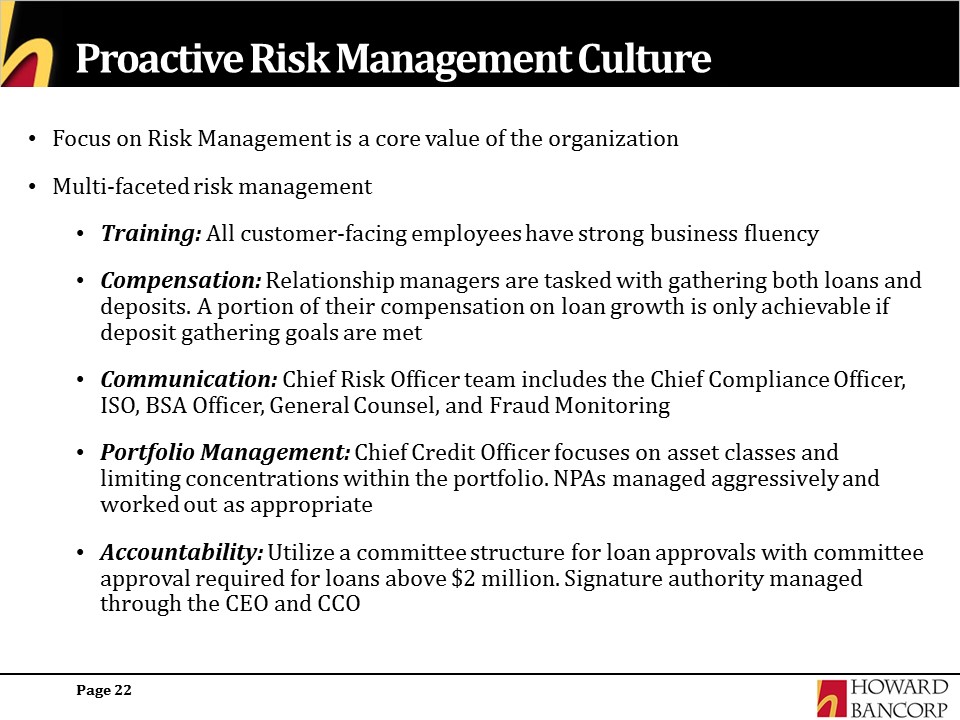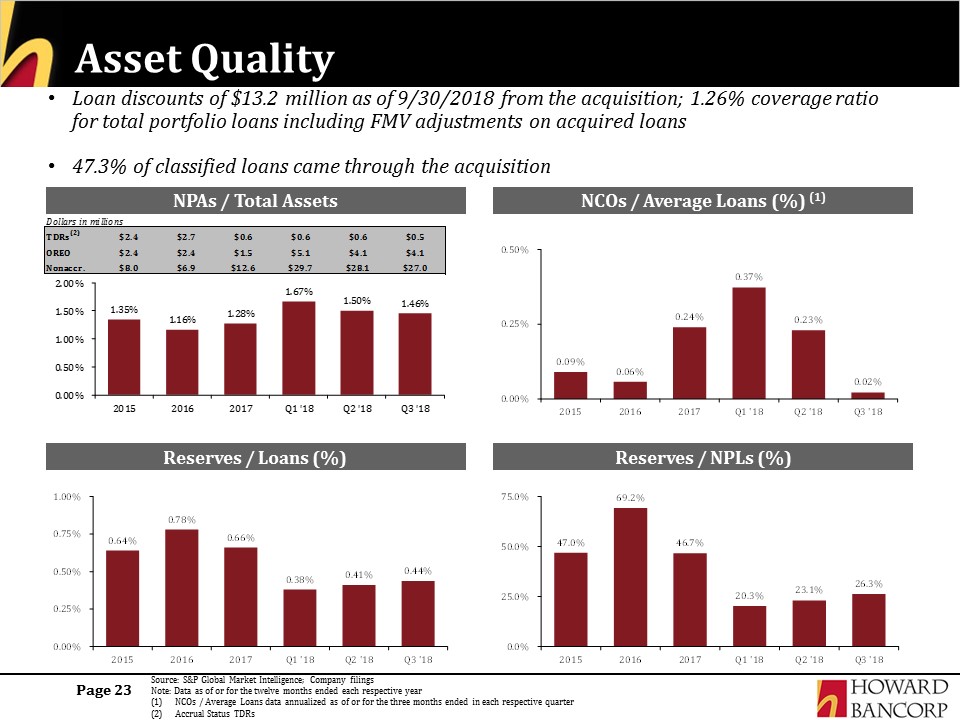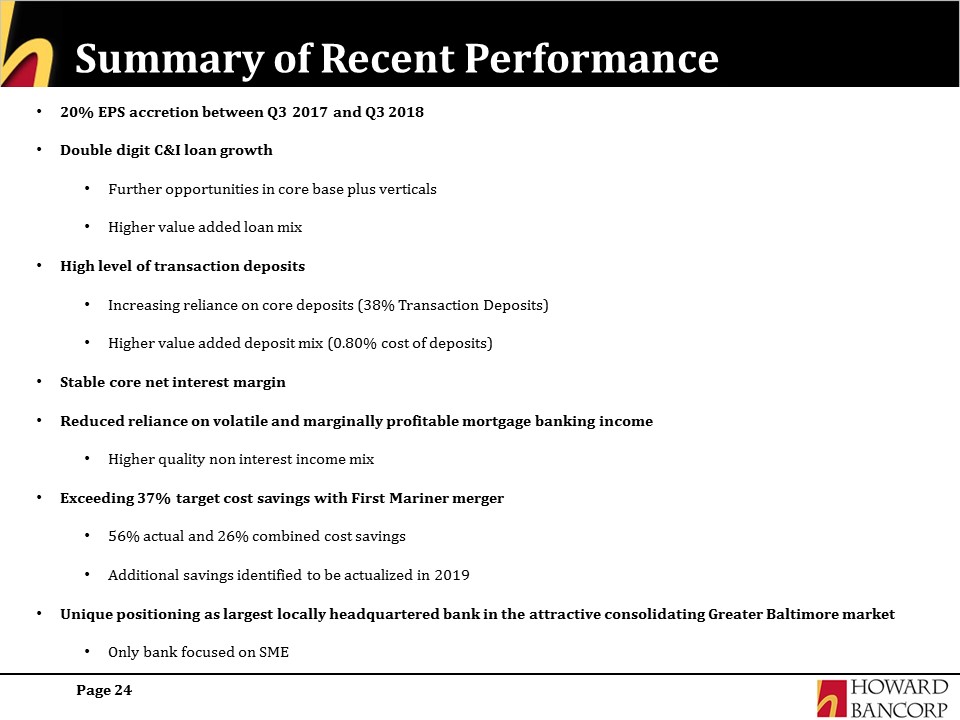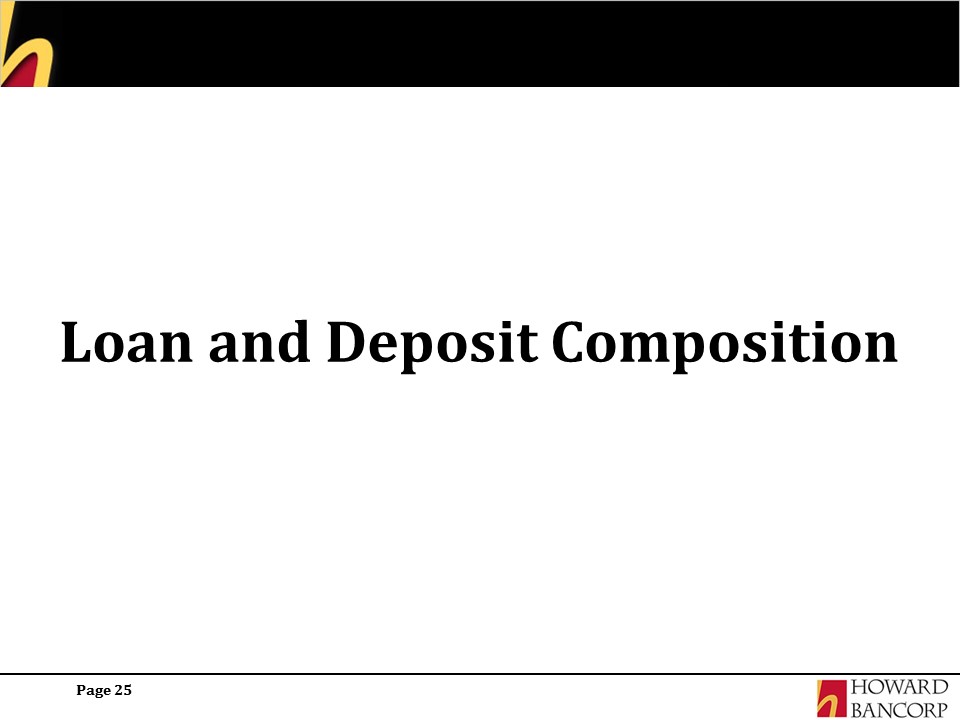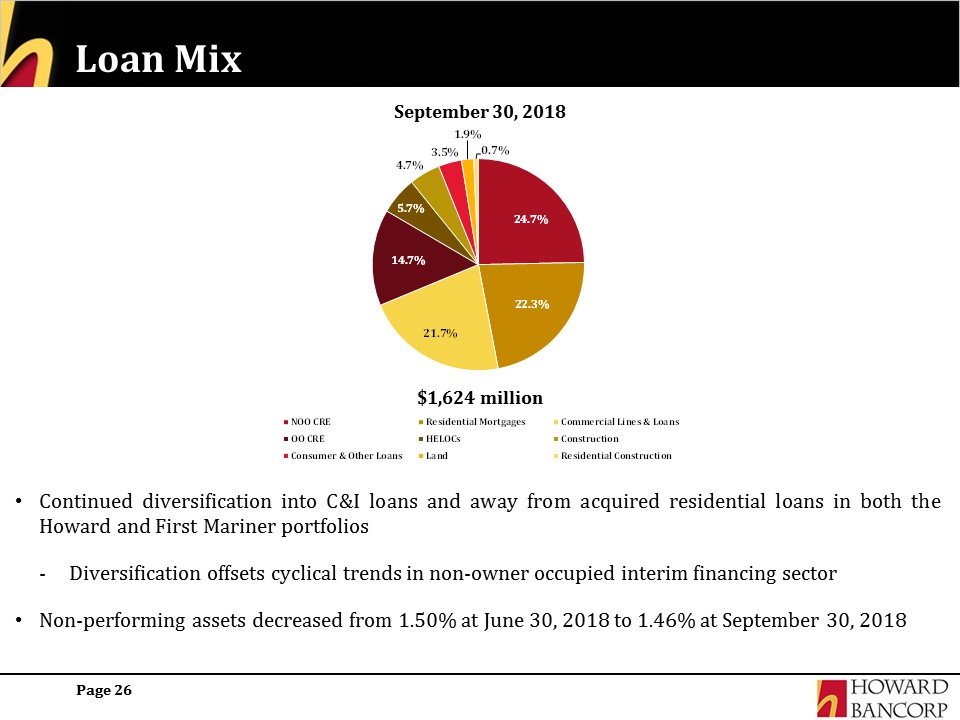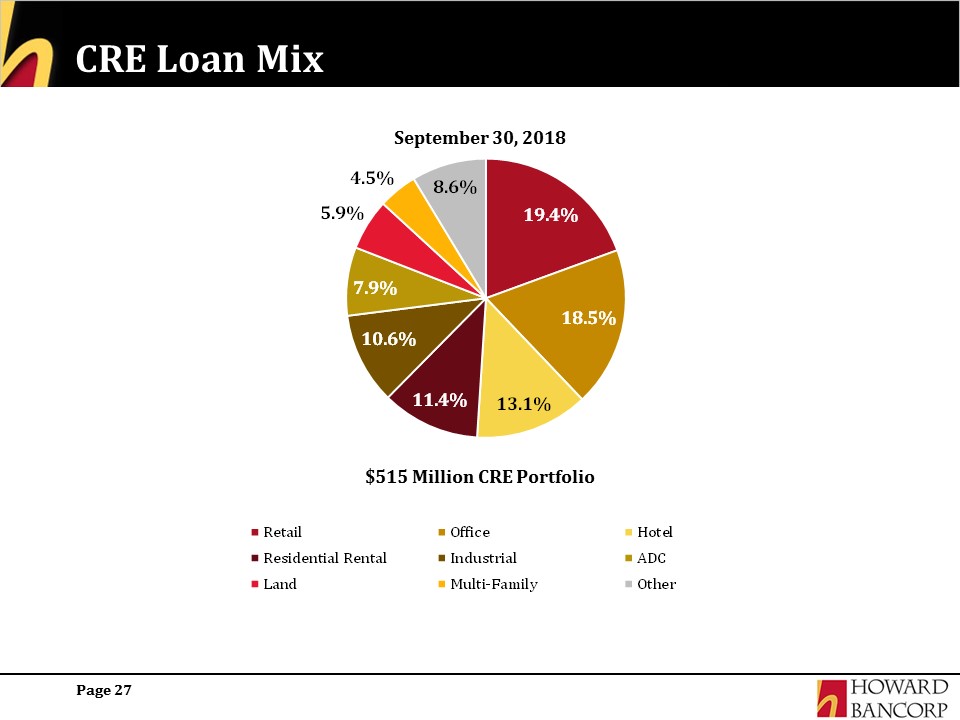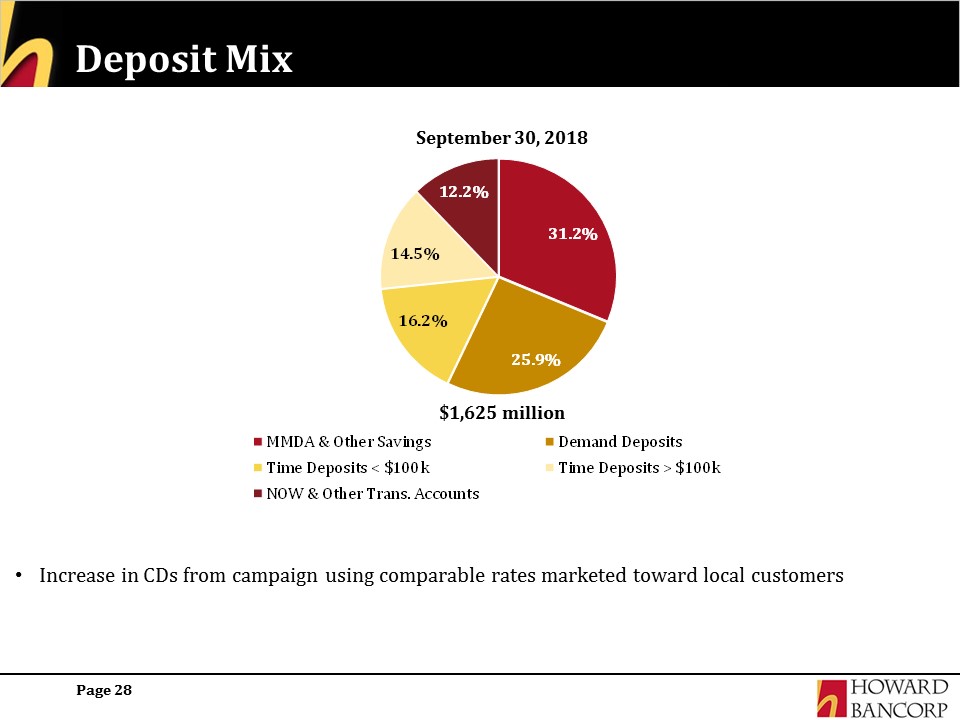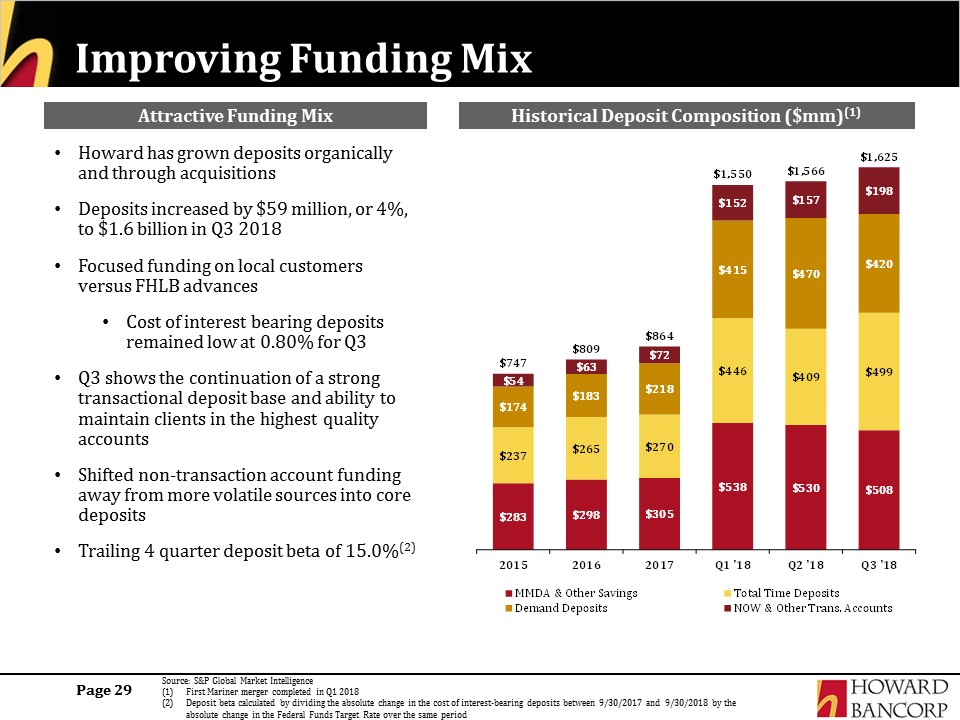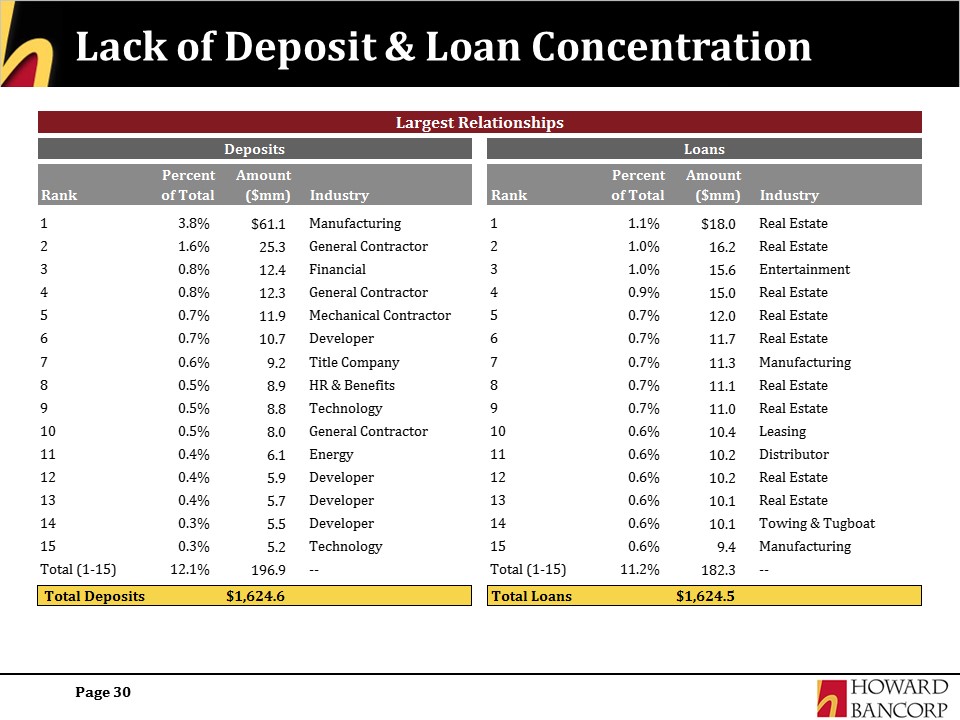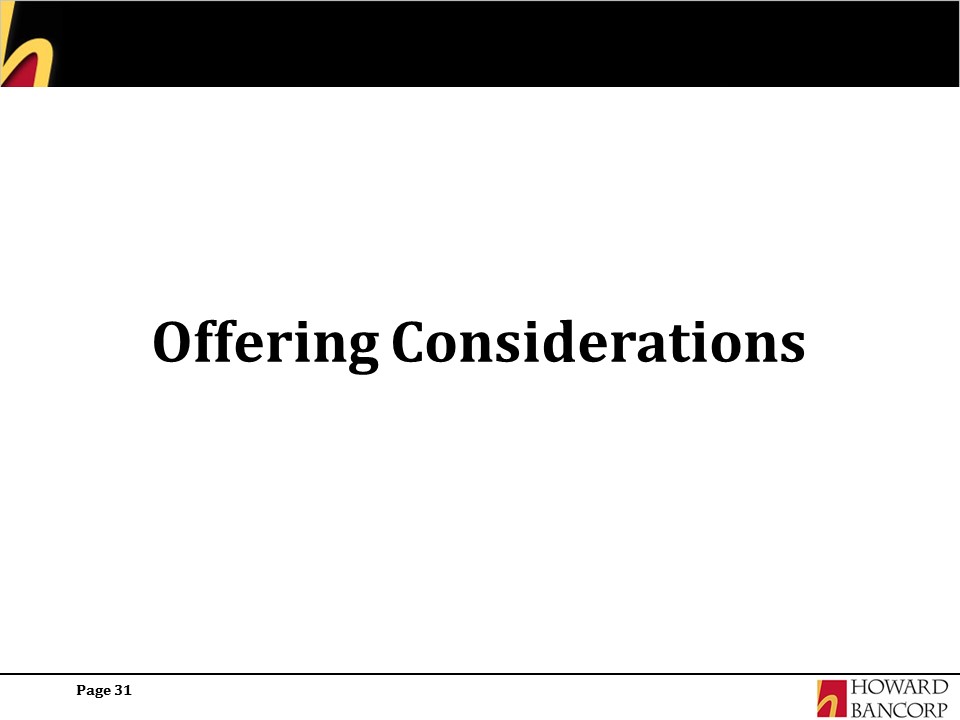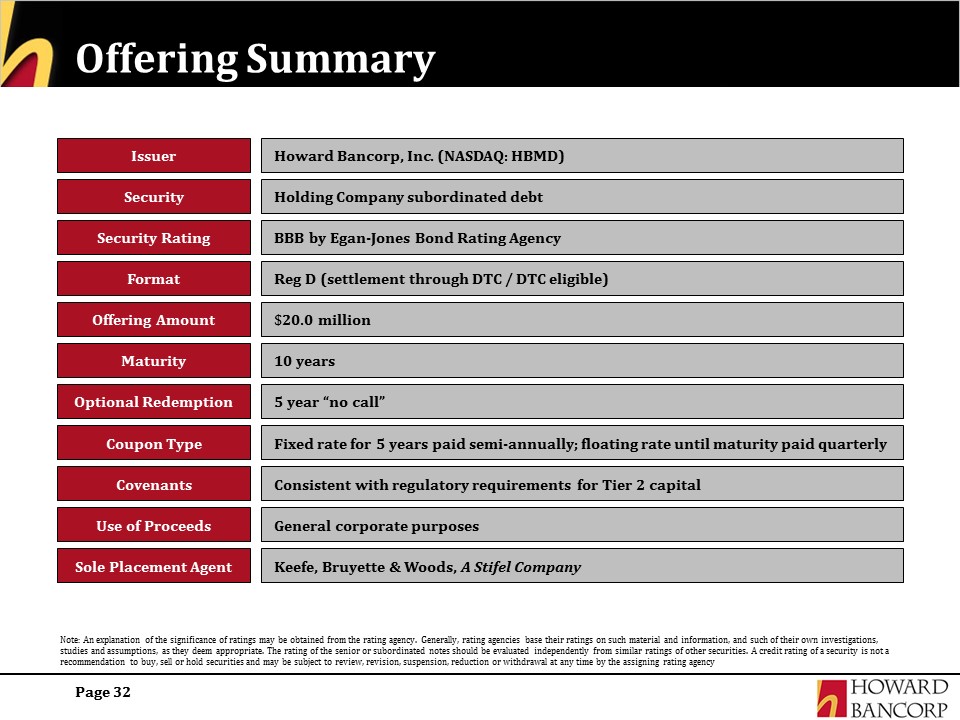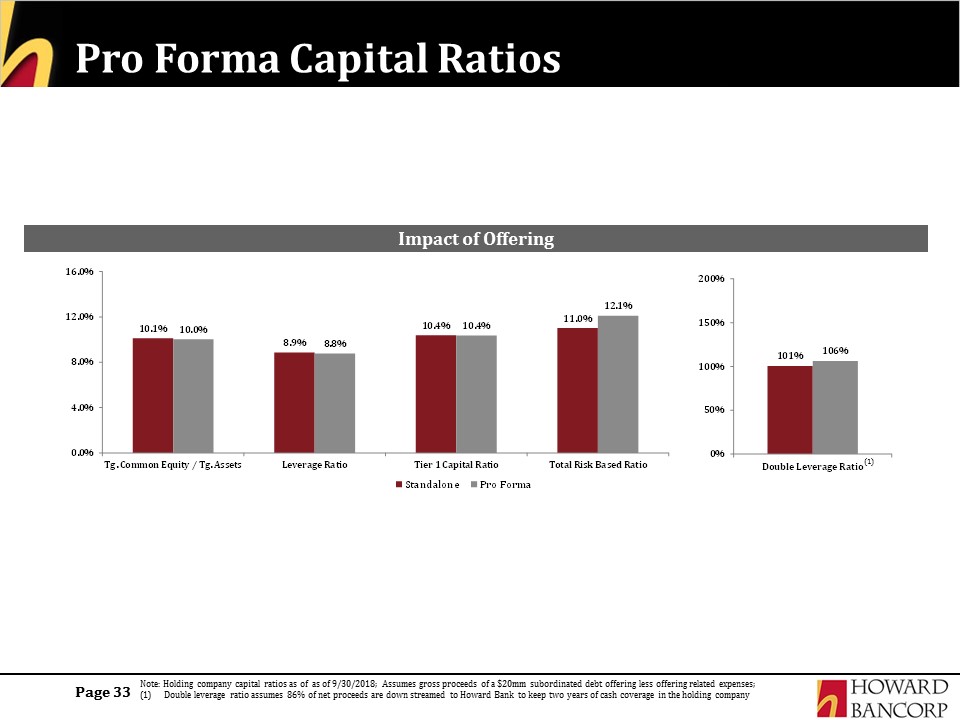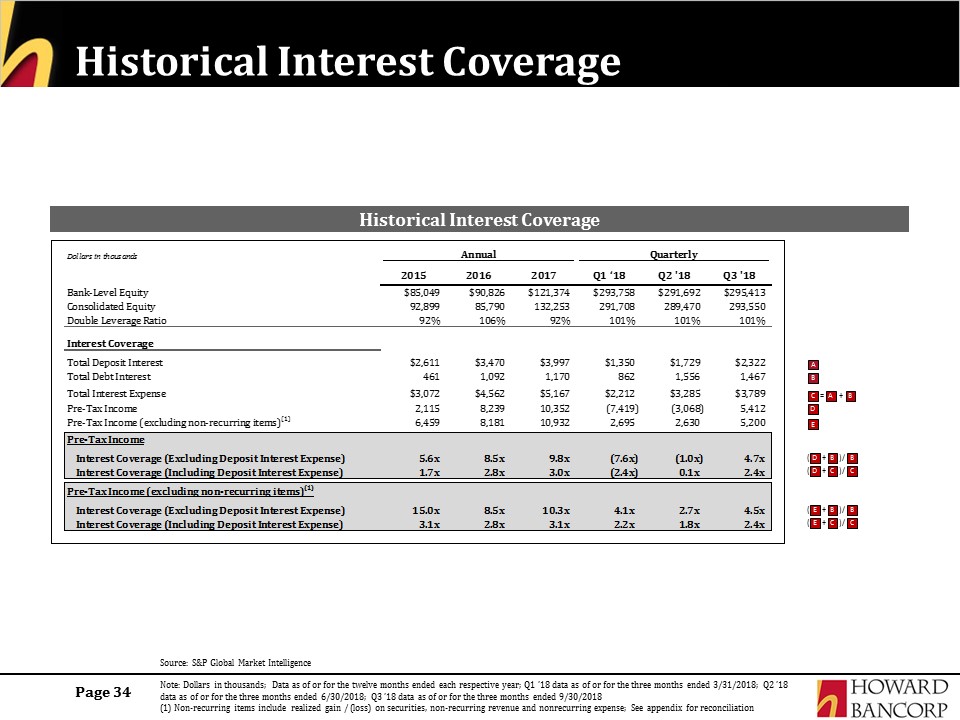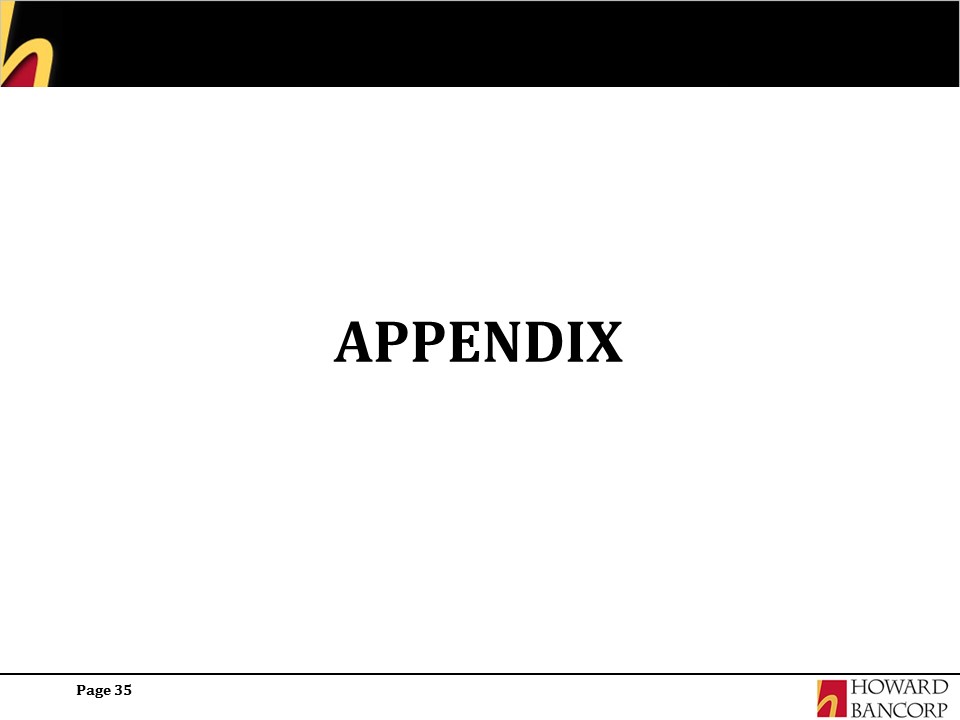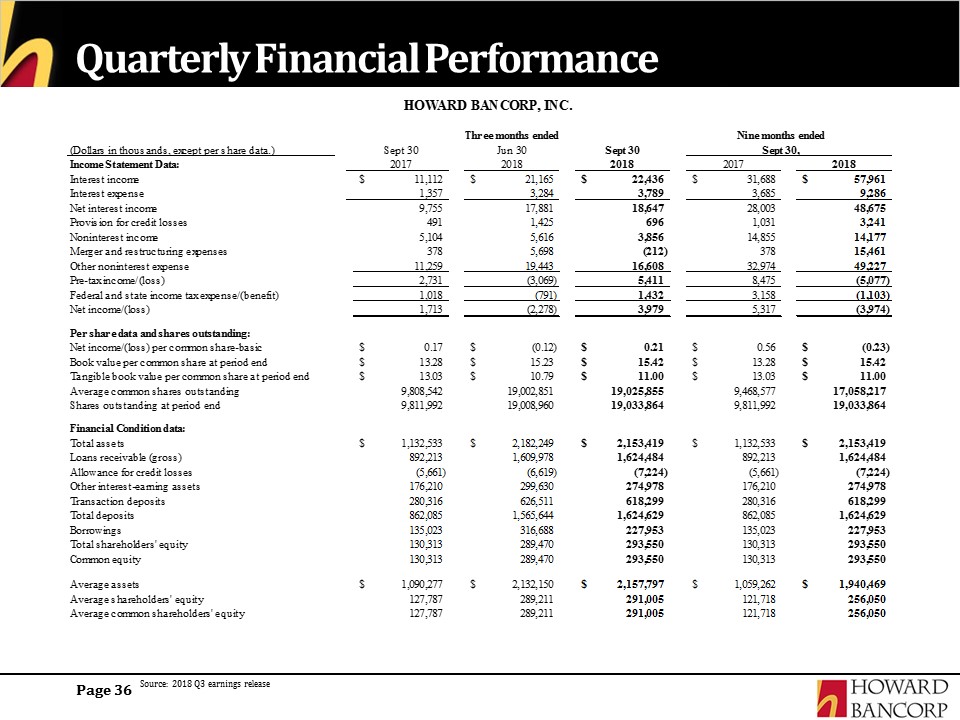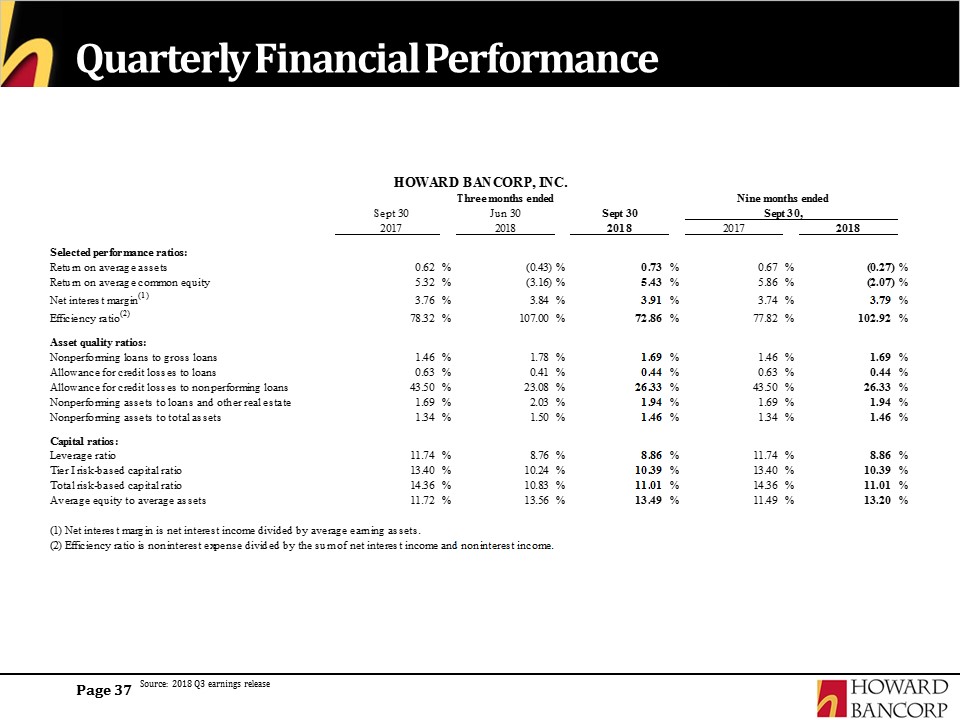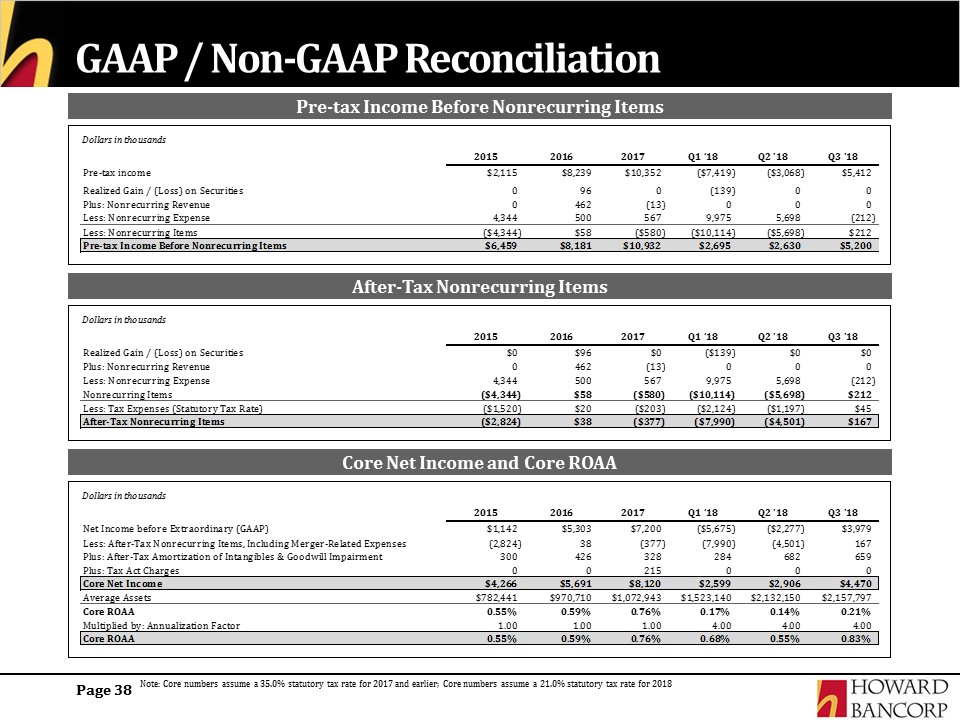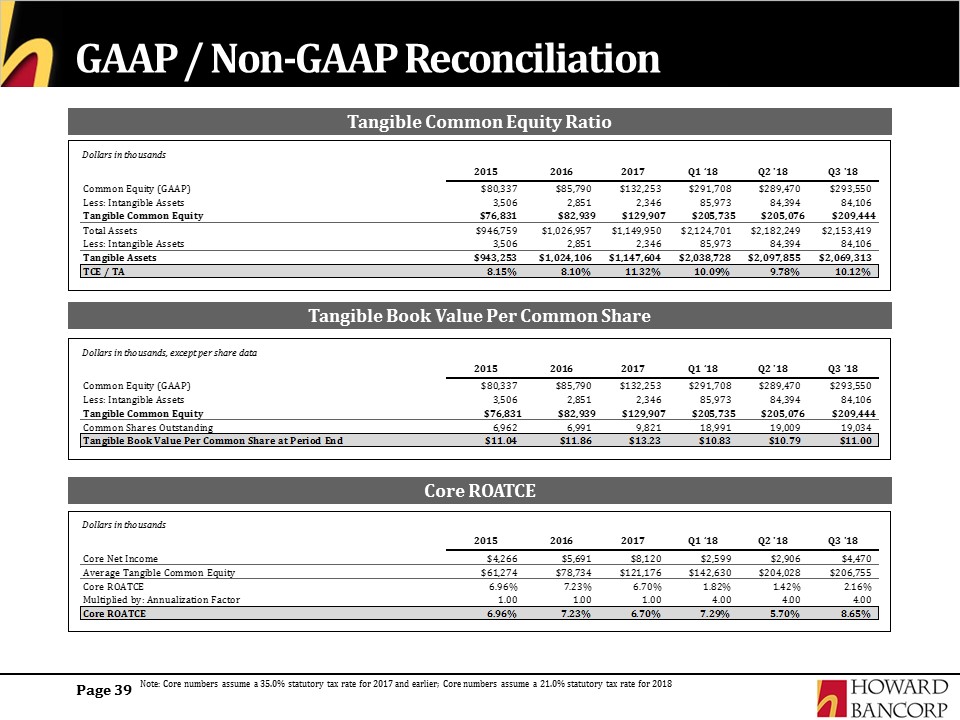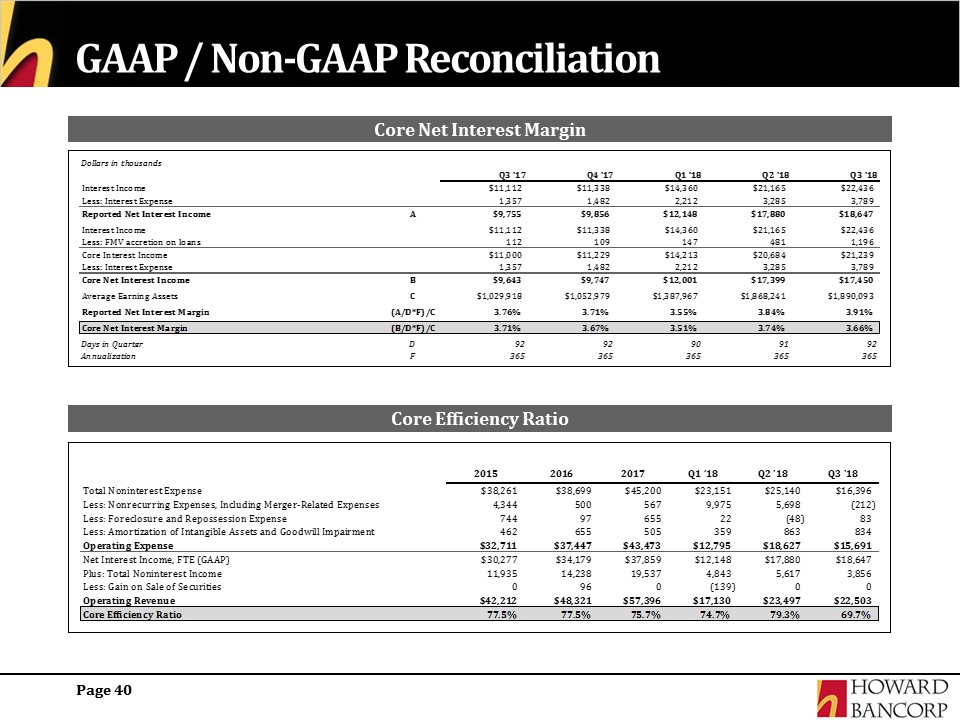This presentation contains estimates, predictions, opinions, projections and other "forward-looking statements" within the meaning of Section 27A of the Securities Act of 1933, as amended, and Section 21E of the Securities Exchange Act of 1934, as amended. Forward-looking statements often use words such as “anticipate,” “believe,” “contemplate,” “estimate,” “expect,” “forecast,” “intend,” “may,” “plan,” “project,” “should,” “will,” or other words of similar meaning. You can also identify them by the fact that they do not relate strictly to historical or current facts. The statements presented herein with respect to Howard Bancorp, Inc.'s (“Howard”) beliefs, plans, objectives, goals, expectations, anticipations, assumptions, estimates, intensions, and future performance, including our growth strategy and expansion plans, including potential acquisitions, our expectations regarding non-interest expense cost reductions, improving efficiency and optimizing our footprint, increasing operating leverage, and expected balance sheet growth and increased return on assets, are forward-looking. Such forward-looking statements involve known and unknown risks, uncertainties and other factors, some of which may be beyond our control, that may cause our actual results, performance or achievements to be materially different from future results, performance or achievements expressed or implied by such forward-looking statements. Such risks and uncertainties include, but are not limited to: deterioration in general market conditions and economic trends in the United States generally, and particularly in the markets in which Howard operates and in which its loans are concentrated, including the effects of any future deterioration in housing markets, increase in unemployment levels, or slowdowns in economic growth, or a return to recessionary conditions; our ability to enter new markets successfully and capitalize on growth opportunities, to successfully integrate acquired entities, and to otherwise implement our growth strategy Howard’s level of nonperforming assets and the costs associated with resolving problem loans including litigation and other costs; changes in market interest rates, which may increase funding costs and reduce earning asset yields and thus reduce our margins; the impact of changes in interest rates and the credit quality and strength of underlying collateral; the credit risk associated with the substantial amount of commercial real estate, construction and land development, and commercial and industrial loans in our loan portfolio; our need to comply with extensive regulatory requirements and changes in laws or government regulations or policies affecting financial institutions, including changes in regulatory fees and capital requirements and the potential expenses in complying with new or revised regulations or policies; possible additional loan losses and impairment of the collectability of loans; Howard’s ability to comply with applicable capital and liquidity requirements (including the finalized Basel III capital standards), including our ability to generate liquidity internally or raise capital on favorable terms; any impairment of Howard's goodwill or other intangible assets; system failure or cybersecurity breaches of Howard’s network security; competition from both from traditional financial service providers and from non-banks that have started to offer products and services traditionally provided by banks, including technology-oriented financial services (FinTech) companies that are subject to limited regulation; our ability to successfully keep pace with technological change affecting the financial services industry; Howard’s ability to recruit and retain key employees; the effects of weather and natural disasters such as floods, droughts, wind, tornadoes and hurricanes as well as effects from geopolitical instability and man-made disasters including terrorist attacks; the effects of any reputation, credit, interest rate, market, operational, legal, liquidity, regulatory and compliance risk resulting from developments related to any of the risks discussed above; and the costs associated with resolving any problem loans, litigation and other risks and uncertainties, including those discussed in Howard’s Form 10-K for the year ended December 31, 2017 and other documents filed by Howard with the Securities and Exchange Commission from time to time. 2 Forward Looking Statements
